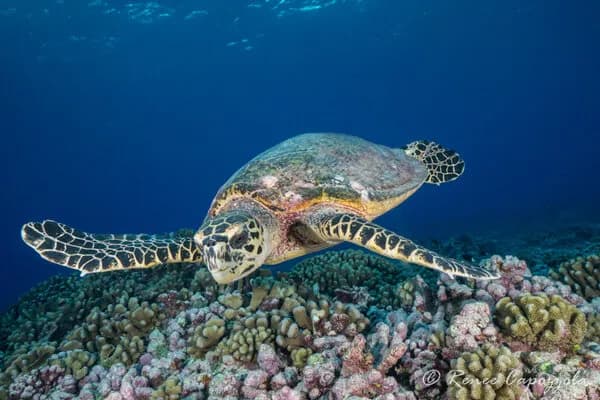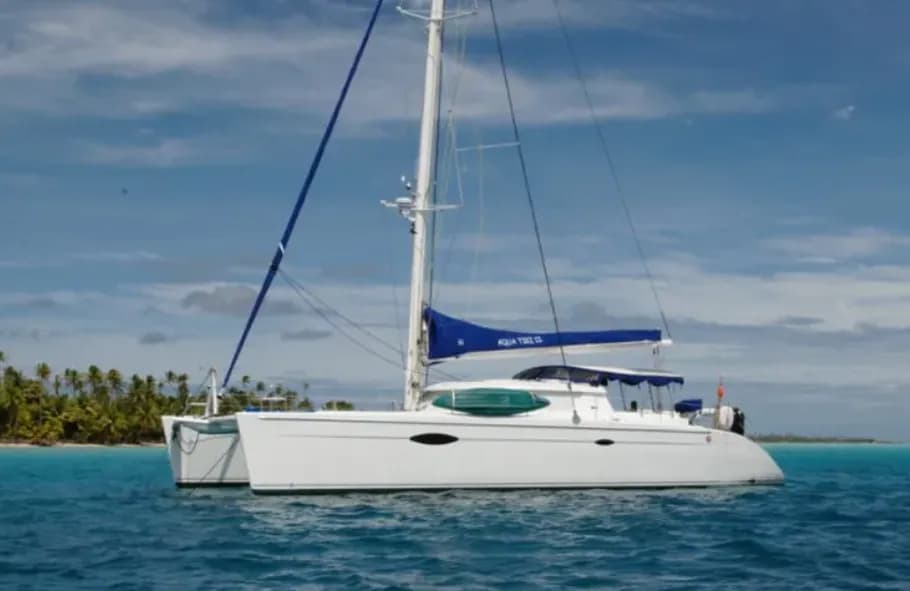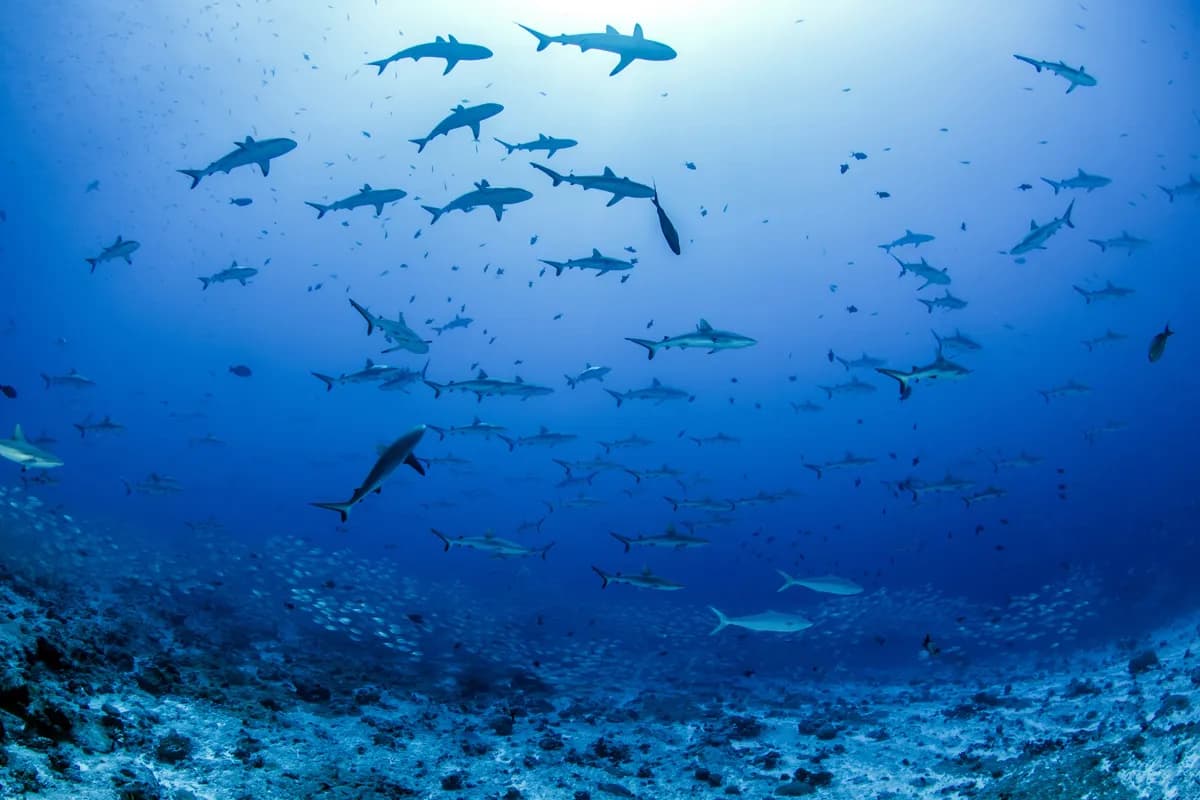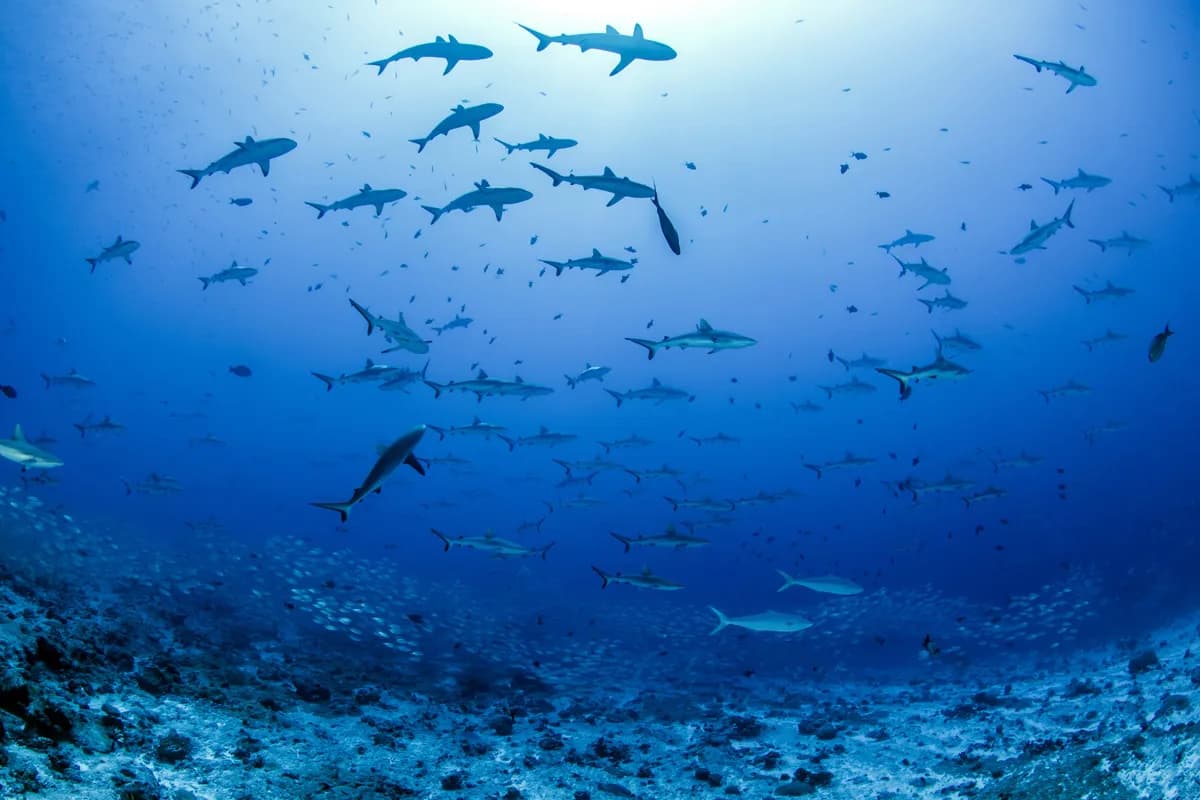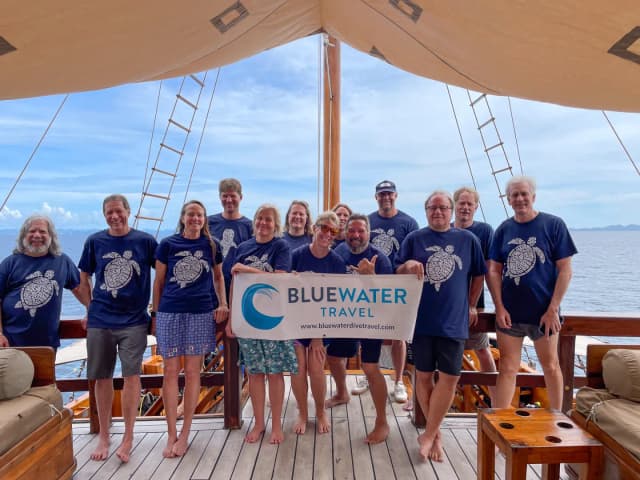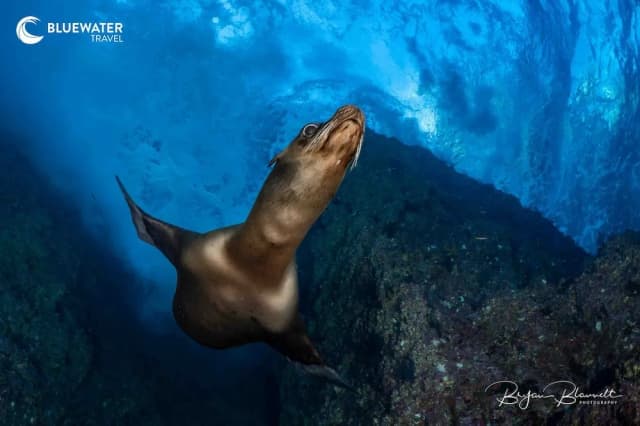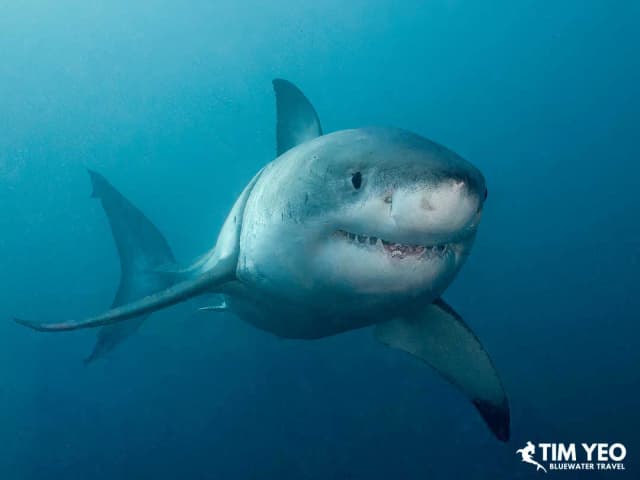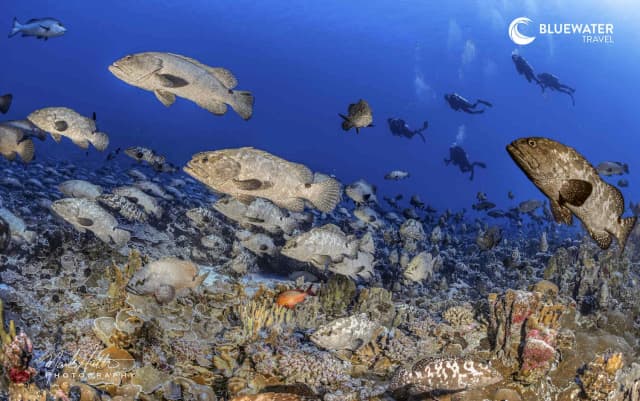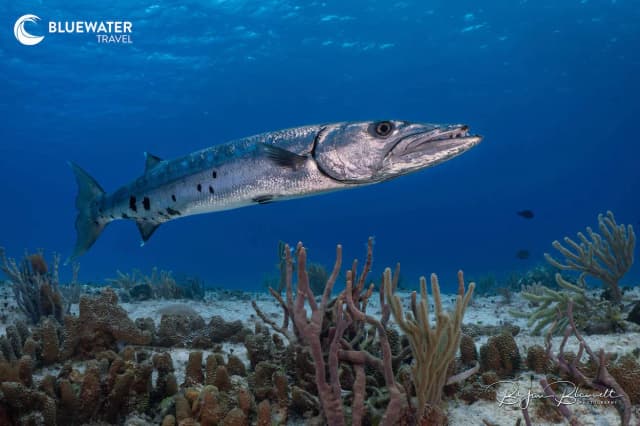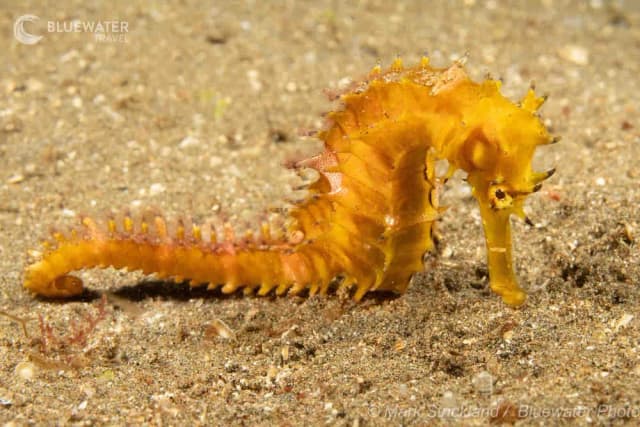French Polynesia: Epic Shark Diving in Paradise
By Renee Capozzola
When searching for a travel destination where the diving is just as good as the topside scenery, there are few places in the world that fit the bill. However, French Polynesia, a.k.a. Tahiti, eloquently combines breathtaking beaches with adrenaline-pumping shark diving.
Ever since Captain James Cook arrived in 1769, islands such as Tahiti and Bora Bora have conjured up images of pure paradise. Here, you will find unspoiled talc-white sand beaches lined by swaying palm trees, dotted along crystal-clear turquoise lagoons where the shades of blue and aqua seem infinite.
2019 Note: Read our Best Shark Diving in the World article to learn why French Polynesia deserves to be in the top 5!
A blacktip reef shark in the crystal clear waters of Tumakohua Pass
Often referred to as the shark capital of the world, you will be awarded a plethora of sharks on almost every dive along with a diversity of marine life. You can further satisfy your needs for adventure by diving the current-swept passes of the Tuamotu islands where you will encounter sharks by the hundreds along with rays, dolphins, and large schools of fish.
If you are a fan of pristine beaches, big animals, and warm water diving with spectacular visibility, then French Polynesia is the perfect destination for you!
A grouper one the colorful reefs of Tumakohua Pass
The Diving
The best scuba diving in French Polynesia is located north of the main Society islands of Tahiti, Moorea, and Bora Bora within the Tuamotu chain of islands, which includes the atolls of Rangiroa and Fakarava. You can get here by taking Air Tahitis domestic flight from Papeete which is about one hour long.
In general, the best time of year to visit French Polynesia is between the months of April and October, which correlate to the cooler dry season. However, the Tuamotu islands receive less precipitation than the Society islands and therefore have less run-off and better visibility than the Society islands between November-March. Thus, a trip to the Tuamotu islands can occur year-round.
Butterflyfish flutter over Avatoru Pass
Daytime temperatures range from 81-86 degrees Farenheit and water temperatures generally range from 79-82 degrees Farenheit with December-April having the warmest water temperatures and the highest humidity. A 3mm wetsuit is recommended for the fall, spring, and summer while a 3-5mm wetsuit is appropriate for the winter months (June-August), depending on how cold you get.
Visibility tends to be 100-150 feet or more offshore and 50-80 feet near shore.
A school of barracuda at Tiputa Pass
Recommended Dive Sites
Tiputa Pass, Rangiroa: Without a doubt, Tiputa Pass is the most famous and well-known dive site in French Polynesia. This is a dive you can repeatedly perform, day after day, and still, be surprised by what you may see each time. From the great hammerhead sharks to the innumerable grey reef sharks to the schools of barracuda, bottlenose dolphins, eagle rays, manta rays, turtles, and giant napoleon wrasse, you never know what you may run into! Its even possible to witness all of these animals on a single dive!
The way this dive is performed depends on the tides and the currents. With an incoming current, you will be dropped off by a zodiac boat on the ocean side of the pass where you will descend 30-40 meters or so. Upon your descent, be on the lookout for bottlenose dolphins which often hang out near the pass depending on the currents. As you go deeper and near the opening of the pass, large schools of grey reef sharks congregate along with big schools of fish. Look into the blue for mantas, eagle rays, tuna, and other species of sharks.
As you enter the pass, the reef becomes more shallow and if the current is ripping, you will get to experience shooting the pass which this dive is so famous for. Near the center of the pass, you may grab onto one of the canyons around 20 meters or so to admire the marine life hanging in the current. A safety stop is usually done in the shallow lagoon at the end of the pass.
A hawksbill turtle soars over Tiputa Pass
With an outgoing current, dives are usually done on the ocean side of the pass along the reef going towards the The Elbow, a.k.a. The Angle. Here you may be able to see the bottlenose dolphins along with schools of blackfin barracuda. Depending on the current, you may hang onto the corner of the reef looking for pelagics before ascending to a more shallow depth to swim over The Angle.
Here, the coral is more healthy and you will be able to view a diversity of reef fish with lots of natural light which affords an excellent opportunity to practice your photography skills. There is also a very good chance of seeing hawksbill turtles here and even manta and eagle rays. The dive then usually continues along the very edge of the reef -- where there is no current -- and ends in shallow water towards the lagoon.
Large school of jacks at Avatoru Pass
Avatoru Pass, Rangiroa: Located just west of Tiputa lies Avatoru Pass, which is another drift dive that is certainly worth a visit. Since it faces more northwest vs. northeast like Tiputa, it gets less wind and waves and thus is calmer. Here, you may have the unique opportunity to view and photograph large silvertip sharks up close. The coral here is healthier and more plentiful thanTiputa. Other common marine life includes large schools of swirling jacks as well as grey reef sharks, African pompeo fish, turtles, and moray eels.
Hundreds of goupers gathering at Tumakohua Pass.
Tumakohua Pass, South Fakarava: Offering a mellower current than Tiputa Pass and schools of grey reef sharks at shallower depths, the Tumakohua Pass offers one of the most unique shark dives in the world. Here, you will be able to view a wall of sharks, hundreds in number, hanging in the current in their natural habitat without any baiting. These grey reef sharks can be viewed at several points along the pass between 15-30 meters of depth. You may also get to see other species of sharks along with barracuda, giant napoleon wrasse, schools of jacks, and a diversity of fish.
Wall of sharks at Tumakohua Pass.
At the end of the pass -- in shallow water -- there are also many blacktip reef sharks. The healthy coral reef in this area, combined with gin clear visibility, provides an excellent opportunity to capture stunning split shots or over-unders. It should also be noted that once a year in July, the annual grouper spawning takes place, which not only attracts thousands of large groupers, but also a plethora of hunting sharks.
Blacktips and stingrays at Moorea
Recommended Add-On: The Island Of Moorea
If you have the time, I highly recommend combining a trip to the Tuamotu islands with a visit to the enchanting island of Moorea. Since getting to Moorea only involves a short ferry ride from Papeete, it makes a perfect stopover to enjoy some relaxation along with some good shark diving and excellent snorkeling. The dive sites here are mostly located on the ocean side of the lagoon and like the Tuamtou islands, you will encounter plenty of sharks, including blacktip reef sharks, grey reef sharks, and Mooreas signature shark the large lemon shark.You can also snorkel with blacktip reef sharks and stingrays simultaneously in the shallow lagoon.
A trip to Moorea at one of the luxurious resorts
Finally, there are several luxurious resorts to choose from which feature private overwater and beachfront bungalows. In my opinion, a visit to Moorea is the perfect way to end a dive trip to French Polynesia in style!
Author Renee Capozzola making friends in French Polynesia
About The Author
Renee Grinnell Capozzola grew up in southern California and began scuba diving in 2004. Shortly thereafter, she discovered a love of the marine world and took up underwater photography. She currently teaches biology and hopes to increase awareness of fragile marine ecosystems with her photographs: If people see how beautiful the underwater world is, then they will be more interested in protecting it.
In addition to selling her work at several art shows and placing in recent underwater photo competitions, Renee has newly self- published an extensive dive travel guide on French Polynesia titled: Beneath the Surface: The Best Diving & Snorkeling in French Polynsesia. For a more in-depth review of French Polynesia, including recommended dive sites, preferred dive operators, top resorts, common marine life, travel tips, and a fish identification guide,
see Renees book at https://www.blurb.com//b/6184000-beneath-the-surface
and her website at www.beneaththesurfaceimaging.com
Grouper spawning event at Tumakohua Pass
Join Bluewater On Our French Polynesia Workshop
Email us at info@bluewaterdivetravel.com for a special deal on the last remaining spots in Fakarava and Rangiroa in French Polynesia for an underwater photo workshop featuring daily seminars, photo reviews, and one-on-one sessions.
How To Book A Trip To French Polynesia
We can book you a dive resort or a liveaboard in French Polynesia at the best price. We know the diving, operators, logistics better than anyone else in the industry. Email us at info@bluewaterdivetravel.com to start planning your next dive adventure.
For another great trip recap, check out our 2018 report from Truk Lagoon!
